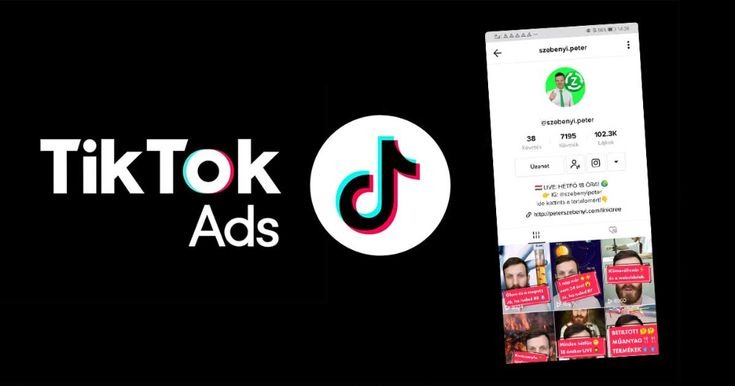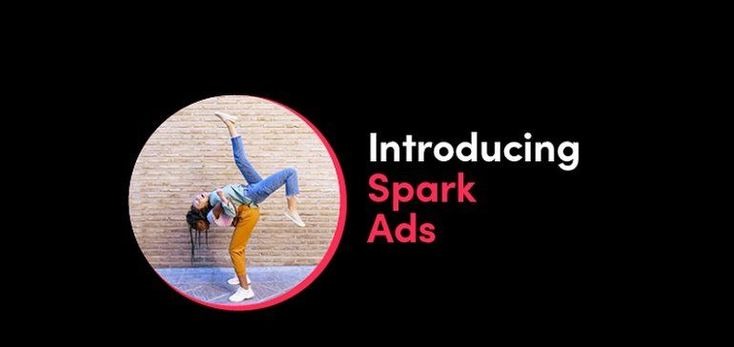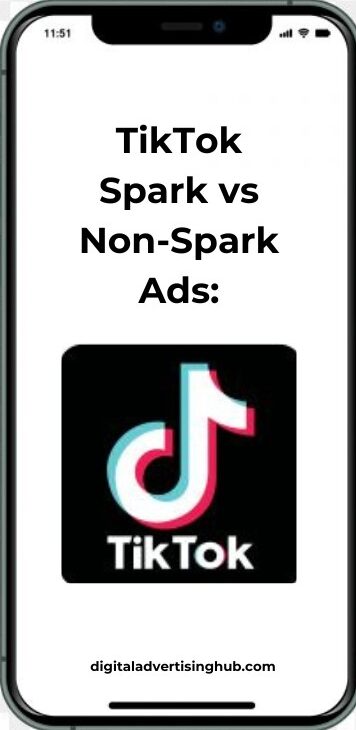TikTok advertisers love arguing about creativity, budgets, and targeting, but one debate refuses to die quietly: TikTok Spark Ads vs Non-Spark delivery differences.
And honestly, it’s not just a “two ad formats walk into a bar” situation — these two behave wildly differently once you hit publish.
Spark Ads tap directly into real user posts and creator content, riding the wave of existing engagement.
Non-Spark Ads? You’re building momentum from absolute zero, like pushing a car up a hill because you thought cardio sounded fun this week.
That’s why delivery shifts so dramatically between them. Not because TikTok is chaotic (okay… maybe a little), but because the formats operate on totally different signals, data paths, and engagement baselines.
Understanding those hidden mechanics is the difference between ads that soar and ads that quietly leak your budget into the void.
What Are Spark and Non-Spark Ads on TikTok?

To truly understand TikTok Spark vs Non-Spark Ads, you first need to know what each format is.
Spark Ads are a native TikTok ad format that leverages existing organic videos — either from a brand’s account or from creators who give permission.
With Spark Ads, you promote a real TikTok post, preserving all its likes, comments, and shares, and even maintaining the original creator’s handle.
In contrast, Non-Spark Ads (sometimes called traditional in-feed ads) require brands to upload new video creatives directly into TikTok’s Ads Manager.
These ads do not tie back to any public TikTok profile; they function independently.
The core difference lies in origin: Spark Ads reuse organic content, while Non-Spark Ads are built specifically for paid campaigns.
That structural distinction has deep implications for how they perform, how users engage with them, and how delivery works on the platform.
Why Delivery Differs in Spark vs Non-Spark Ads
When you compare TikTok Spark vs Non-Spark Ads, the delivery mechanisms and performance metrics diverge significantly, and the distinction isn’t just theoretical — it shows up in real-world campaigns.
Engagement Retention & Authenticity
One of the most powerful advantages of Spark Ads is that they retain the social proof of the original post.
Because the video comes from an existing TikTok account, all the existing likes, comments, and shares stay intact when the ad runs.
This gives the ad a more native feel; users often perceive it as less pushy and more trustworthy.
By contrast, Non-Spark Ads don’t carry over any prior engagement. Each time you run a non-Spark ad, you’re essentially starting fresh — no comments, no organic validation, just your creative and your call to action.
That can make a big difference in how viewers perceive the ad.
Performance Uplifts & Metrics
According to TikTok’s internal benchmarks, Spark Ads generate significantly higher completion rates, engagement, and conversion lift compared to standard in-feed ads.
For example, TikTok Business reports a +30% increase in completion rate, +142% in engagement, and +43% in conversions for Spark Ads.
Other industry sources back this up: Spark Ads often outperform non-Spark formats in key performance indicators like view-through rate (VTR) and cost efficiency.
These performance differences are a major reason why many marketers lean into Spark Ads when authenticity and social proof matter.
Cost Implications and Efficiency
Because Spark Ads amplify content that already exists — content that may already be resonating — there’s often less creative production cost involved.
Instead of spending time and budget on producing multiple ad creatives from scratch, brands can elevate a well-performing organic video.
That makes Spark Ads more cost-efficient, particularly for performance-driven campaigns where engagement and conversion matter.
However, it’s not free money — there are trade-offs.
For one, because Spark Ads maintain the creator’s handle and engagement metrics, ad duration is often controlled by the creator’s authorization code, which determines how long the brand can run the ad.
Unlike Non-Spark Ads, where brands have full control over campaign length, Spark Ads are limited by the creator’s permission settings.
Trust and Brand Perception
One subtle but meaningful factor in the delivery difference is user trust.
When users see an ad coming from a creator’s real TikTok profile — complete with comments, likes, and a familiar voice — it doesn’t feel like blind paid media.
That trust often translates into better engagement and sometimes deeper consideration.
Non-Spark Ads can feel more like traditional commercials, especially when creative control is maximal. While that gives brands flexibility, it may come at the cost of perceived authenticity.
When Spark Ads Make More Sense (and When They Don’t)
To decide between TikTok Spark vs Non-Spark Ads, it’s important to match the format with your campaign goals, audience, and content pipeline.
Use Spark Ads When:
#1. You Have High-Performing Organic Content
If a video on your TikTok account is already doing well — or you’ve collaborated with creators whose posts resonate — Spark Ads let you amplify that success.
This way, you make the most of content that already has social proof.
#2. Authenticity and Trust Matter
For campaigns that need to feel native and genuine, Spark Ads are a strong choice. Because they preserve the creator’s identity and engagement, they can be more persuasive to users

#3. You Want to Reduce Creative Costs
If budget or time limits creative production, Spark Ads are efficient — you don’t need to produce an entirely new video.
#4. You’re Running Performance Objectives
Brands looking for conversions, app installs, or other measurable KPIs often benefit from Spark Ads because of their higher engagement and completion rates.
Use Non-Spark Ads When:
#1. You Need Full Creative Freedom
If your campaign requires a very specific message, visual style, or CTA, non-Spark ads give you the control to build exactly what you need from scratch.
#2. You’re Targeting Broad Reach or Launching a New Product
When introducing a new brand, product, or campaign theme, Non-Spark Ads may be more effective, because they’re not limited by creator content or authorization codes.
#3. Authorization Is a Barrier
To run a Spark Ad, you typically need an authorization code from the creator for a specific TikTok post. If you can’t secure that, non-Spark may be your fallback.
#4. Campaign Duration Needs to be Unlimited
Because a Spark Ad’s run time is tied to the creator’s permission, you may be constrained. Non-Spark Ads let you set whatever schedule your campaign needs.
Risks and Trade-Offs to Be Aware Of
While Spark Ads are powerful, they’re not a silver bullet. There are real caveats in the TikTok Spark vs Non-Spark Ads equation.
Authorization & Control
Because Spark Ads run on a creator’s post, brands must navigate the authorization process.
The creator must provide a unique video code to the brand so it can run the post as an ad.
The duration for which that ad can run is often determined by the creator’s settings, which could limit flexibility.
Cost Uncertainty
Although Spark Ads can be more cost-efficient, they don’t always guarantee lower costs. Some advertisers report higher CPCs when using Spark Ads, depending on targeting and bidding strategy.
Meanwhile, CPMs may be lower, but if clicks or conversions don’t follow, the cost advantage may shrink.
Attribution & Analytics Complexity
When promoting a real TikTok post, it’s possible to get discrepancies between reported clicks and actual session data.
Several advertisers have flagged this issue in public forums: for example, one user noted that their Spark Ad campaign showed many clicks, but only a fraction translated into page visits.
This can complicate measurement and ROI calculations.
Ethical and Relationship Risks
If you’re working with creators, there’s a balance to maintain. Some creators feel they should be paid not just for producing content, but for allowing their content to be used as Spark Ads.
On the flip side, brands need to be transparent about use rights and the expected performance of their collaborations.
How to Optimize Delivery for Spark Ads

Given the trade-offs, smart advertisers think carefully about how to set up Spark Ads campaigns to maximize returns. Here are proven strategies:
#1. Choose High-Performing Content
Prioritize organic videos — from your brand or creators — that are already resonating. Using successful content gives you a higher ceiling when you amplify it.
#2. Get Proper Authorization
Make sure you secure the correct code from creators. Clarify how long the ad can run and whether renewal is possible.
#3. Use Precise Audience Targeting
Leverage TikTok Ads Manager’s targeting options. Even though the ad comes from a creator, you can still layer on interests, demographics, and behaviors to reach potential customers effectively.
#4. Monitor Metrics Closely
Pay attention not just to impressions, but to engagement (likes/comments), retention (VTR), and downstream actions (clicks, conversions).
Because Spark Ads preserve social proof, performance has to be evaluated holistically.
#5. Test Non-Spark Alongside
Run A/B tests with non-Spark ads to understand which format works best for your audience and message.
In some cases, non-Spark might convert better for very direct, conversion-oriented campaigns.
#6. Negotiate Usage Rights Thoughtfully
When collaborating with creators, build clear agreements about how long their content can be used, whether they want payment for authorization, and what performance metrics you’ll report back.
Conclusion
When you’re navigating TikTok Spark vs Non-Spark Ads, there’s no one-size-fits-all answer.
The differences in delivery — how engagements, authenticity, cost, and control play out — are real and significant.
Spark Ads shine when you have creator-generated or organic content that already resonates, and when trust and social proof matter for your brand.
They can deliver impressive completion rates, engagement lift, and conversion advantages — all while making efficient use of existing content.
Non-Spark Ads still hold value, especially when you need full creative control, want to run brand-new campaigns, or want to scale with customized content.
Though they may lack the inherent social proof of Spark Ads, their flexibility and direct control make them a powerful tool in the right hands.
In 2025, the most effective TikTok advertisers will likely run both formats in tandem.
Use Spark Ads to amplify what’s already working and lean on Non-Spark for new creative experiments, brand launches, and conversion-heavy campaigns.
That way, you harness the strengths of both delivery models — authenticity and scale — and optimize for performance across the board.










